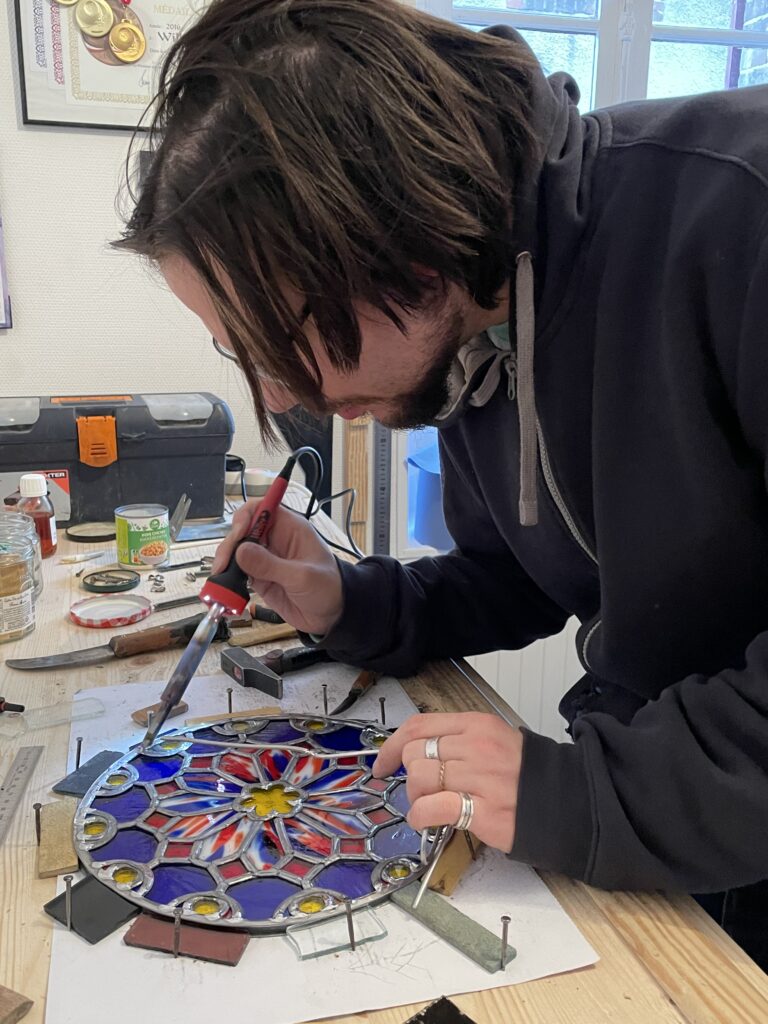Custom Made Stained-Glass
The techniques used to create stained-glass are numerous, as are the styles, and they’re not just for churches, of course. From the sacred to the profane, from the ancient to the contemporary, stained-glass can be adapted to suit every taste.
We can create a custom stained-glass work to suit your aesthetic and practical requirements. To find out more about the techniques we use, see the presentation below. We can create works in each of these techniques on their own, or in combination with one another, giving you even greater artistic freedom and diversity.
The Traditional Technique:
Leaded Glass
By using the traditional technique of assembling glass and lead, we perpetuate a thousand-year-old practice that has been passed down from generation to generation and has never stopped improving. This is the very heart of stained-glass.
The cartoon (drawing) of the artist determines what the stained-glass window will look like in its final form. From there, the glass is cut, mounted together with lead cames and the joints are soldered with tin.

“Beautiful stained glass is eloquent in the richness of its palette and the preciousness of new materials.“
Charles Mauméjean
“Le Vitrail,” La Renaissance, janvier 1929

Copper Foil:
The “Tiffany” Technique
The Tiffany technique does not use lead, but a copper foil backed with adhesive, which allows for lighter pieces. This makes it possible to create three-dimensional pieces such as the famous Tiffany lamps.
The adhesive copper strips are placed along the edges of the different pieces of glass, which are then arranged in their final shape, finally, they are completely soldered with tin.
“For us, the material is poetry.”
Emile Gallé
Revue Industrielle de l’Est, 24 octobre 1897
Grisailles & Enamels:
Glass Painting
Grisaille and enamels are the most commonly used kiln-fired paints.
Grisaille is used to outline forms as well as to create transparency and opacity on the glass using washes of different densities.
Enamels are translucent paints that are often used in combination with grisaille to add color to specific areas of a piece.

Receive our burst of color:
Subscribe to keep up to date with the latest news: